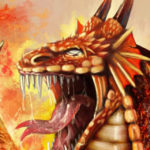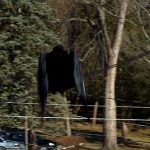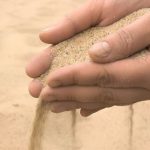 Movies and TV
Movies and TV  Movies and TV
Movies and TV  Politics
Politics The 10 Boldest Coup Attempts of the 21st Century
 Weird Stuff
Weird Stuff 10 Things That Would Have Killed You in the Old West
 Books
Books 10 Pen Names More Famous Than Their Authors
 Creepy
Creepy 10 Unnerving Legends from Around the World
 Movies and TV
Movies and TV 10 Amazing Lead Actor Ideas for Superhero Movies
 Our World
Our World 10 Crazy Facts about Cycads That Might Surprise You
 Technology
Technology 10 World-Changing Examples of Turning Dumb Technology into Smart Technology
 Pop Culture
Pop Culture Ten Celebrities Who Straight-Up Lied on Home Tours
 Animals
Animals 10 Remarkable Things We’ve Recently Learned about Animals
 Movies and TV
Movies and TV 10 Misdirections Directors Used to Manipulate Actors
 Politics
Politics The 10 Boldest Coup Attempts of the 21st Century
 Weird Stuff
Weird Stuff 10 Things That Would Have Killed You in the Old West
Who's Behind Listverse?

Jamie Frater
Head Editor
Jamie founded Listverse due to an insatiable desire to share fascinating, obscure, and bizarre facts. He has been a guest speaker on numerous national radio and television stations and is a five time published author.
More About Us Books
Books 10 Pen Names More Famous Than Their Authors
 Creepy
Creepy 10 Unnerving Legends from Around the World
 Movies and TV
Movies and TV 10 Amazing Lead Actor Ideas for Superhero Movies
 Our World
Our World 10 Crazy Facts about Cycads That Might Surprise You
 Technology
Technology 10 World-Changing Examples of Turning Dumb Technology into Smart Technology
 Pop Culture
Pop Culture Ten Celebrities Who Straight-Up Lied on Home Tours
 Animals
Animals 10 Remarkable Things We’ve Recently Learned about Animals
10 Things You May Not Know about Crows
A crow is a bird of the genus Corvus. Depending on where you live, there is a good chance that you’ll see crows on a daily basis. While the crow is not a unique bird, it is one of the most fascinating birds on this planet—due to some of its unusual capabilities. You may know that they are usually black and tend to operate in groups, but certain facts about crows may surprise you. These are ten things you may not know about crows:
Related: Top 10 Animals With Creepy Behaviors
10 Crows Recognize Faces and Will Pay You Back
Based on research, it was discovered that crows have the ability to remember the faces of humans and other birds that have been either kind or wicked to them and react accordingly. Moreover, studies have also proven that crows have a way of passing this information to other crows and sometimes may pass it down to future generations.
One of the studies was particularly interesting—it involved two groups of people wearing two different types of masks. The two groups approached a crow’s nest. One of the groups trapped crows and took them away, while the other group walked around the crows without trying to interact with them in any way. Five years later, the crows at that site would mob anyone wearing the mask of the group that trapped and abducted some of them five years ago.[1]
9 Some Crows Can Read Traffic Lights
Birds see more colors than humans in several ways. Not only can birds perceive the familiar red, blue, and green that we do, but they can also envision the ultraviolet (UV) spectrum that is invisible to human eyes. They also have better visual acuity. This means birds can determine subtle differences between similar shades of color, gradations that human eyes cannot discern. The cells in the eye responsible for color detection, the cones, are in the retina, and birds typically have four types of cones rather than the three humans have. But that doesn’t mean they know what the colors mean, does it? Perhaps so.
On a university campus in Japan, carrion crows can be seen lining up patiently behind humans, waiting for the traffic to halt. When the traffic light stops the cars, the birds hop on the road and drop nuts. They then wait for the next car to drive over the nuts and crack them open. When the traffic lights turn red, the crows come back and pick up their meal. Carrion crows in Japan have been observed cracking nuts this way since around 1990. Carrion crows have also been observed doing the same in California.[2]
8 Crows Are Great “Impersonators”
Crows are known to mimic human voices. They can also mimic the sounds of other animals. It doesn’t end there—crows have been caught enjoying the confusion that arose when they mimicked human voices or the sounds of other animals.
Unlike parrots, crows cannot use their tongue to talk. Instead, they use their syrinx. However, they have a better memory. Crows can learn and remember words faster than any other bird species. Crows that are kept in zoos or wildlife parks where people get to see them frequently have been heard to say “Hello” upon sighting people. Crows cannot only mimic the human voice, they can be taught to understand its meaning.[3]
7 A Group of Crows Is Called “Murder”
Crows live all over the world except in Antarctica. They are notorious for looting crops and seedlings on farms. The majority of farmers hate them as they are very intelligent and operate in groups. Crows are omnivorous and natural scavengers, although they also feed on dead animals. Historically, crows can be found on battlefields, in cemeteries, and at gallows, patiently waiting for a food source. The voluntary association of crows with places that humans would ordinarily not want to be meant that they easily developed a bad reputation over time.
They soon became associated with evil, and several superstitious notions began to fly around. One of them is that crows form parliaments and tribunals to punish a fellow member for bad conduct. It was said that when a tribunal of crows finds “anyone” guilty, the guilty bird would be murdered instantly. This is one of the arguments advanced for the origin of the term “murder.” While this is a superstition, one thing we know for sure is that crows do kill other crows during territorial fights. This makes the term “murder” meritorious.[4]
6 Crows Have Caused Power Blackouts in Japan
Since the 1990s, crows have experienced a population boom in Japan, no little thanks to their remarkable standard of living, which makes room for plenty to eat for humans and animals alike. However, the crows soon became a menace as they made electricity and fiber-optic cables the desired raw materials for their nests. They went as far as making their nests on electric transformers—with predictable consequences. This led utility companies to form a patrol to take down crow nests on electric facilities.
Between 2006 and 2008, crows stole almost 1400 fiber-optic cables from Tokyo power providers, and they were responsible for around 100 power failures per year at Chubu Electric Power Co. alone. At one time, Chubu Electric Power Co. had to install artificial nests on company towers high above the power lines to ensure that crows did not see the need to vandalize the power lines. The strategy provided the desired results, with the crows settling for the artificial nests rather than building theirs. Japan appears to be the country to have suffered the most from an “organized’ mob action of crows, with reports of hungry crows bloodying the faces of children while trying to steal candy from their hands. Crows have gone as far as stealing ducklings from Tokyo zoos.[5]
5 Crows Can Make Their Own Tools
Some animals know how to make tools to help them survive in the wild. We know of chimpanzees and orangutans, but have you heard that crows can also make and use tools? The New Caledonian crow is capable of creating a hooked tool by bending a pliable material. Researchers have been able to show how these crows fashion and use tools in the wild and in captivity. In one particular study, researchers presented eight New Caledonian crows with a puzzle box containing a small food container behind a door. They left a narrow gap for the birds to be able to reach the food with the aid of sticks that were scattered around.
In the first test, sticks that were sufficiently long to reach the food were made available, and without being told, the birds reached for the sticks and picked the food, all eight of them. In a subsequent test, the researchers presented only short sticks that needed to be joined to make them long enough to reach the food—four of the birds were able to join the sticks and reach the food without any prompting or demonstration from the researchers. Another test was more complex and required sticks of three and even four parts to be joined into a complex hook to reach the food. A crow named “Mango” passed the complex test.
In later research studies, this ability has been seen in other crow species as well.[6]
4 Older Crows Help Parents Raise New Chicks
Crows have a family life, and it amazes us. Older crows can help their parents raise new chicks. While the majority of bird species go away after leaving the nest and may never see their parents again, American crows may remain with their parents for up to five years. While young adult crows wait for a breeding opportunity, they help their parents raise their younger crow siblings. They also help build nests.
Funny enough, crows also retain family bonds even when they leave the family. In a particular incident, a researcher observed a crow family when a two-year-old crow decided to take its leave. Over a year later, it came to visit for a day and was welcomed. The next day, it was gone.[7]
3 Crows Have Local Dialects
We’ve all likely heard the annoying birds in the morning, right? All you want to do is sleep in on a Saturday morning, but those birds have other plans for you. Amazingly, crows produce over 20 calls, but most of us wouldn’t be able to distinguish between some of them. Essentially, they use four basic groups of sounds—the classic “caw,” the harsh “scold,” the courting “rattle,” and the juvenile begging “grunt.” The other sounds are a combination of caws, clicks, coos, whines, and grunts. Crows vocalize to communicate about food, warn of danger, and contact other crows to say “hello.” But could you still understand them if you were away from home, on vacation, let’s say?
We already covered the fact that crows can mimic the voices of humans and the sounds of animals, but these intelligent birds can do more than that. When a crow joins a new flock, they learn the flock’s dialect by mimicking the calls of the dominant flock members. These calls, like human dialects, can vary from valley to valley, and each is unique to a particular locality.[8]
2 Crows Hold a Funeral of Sorts
Humans have understood the concept of death and mourning for millennia. Most people will have attended at least one funeral before their own occurs, of course. Various cultures even have unique and group-specific funeral practices to honor and remember the deceased. Surprisingly, this isn’t just a human concept. It seems that other animals—crows included—may also understand the idea of death.
When a crow dies, other crows gather around it without touching it. Some studies have suggested that the mass gathering of crows around a dead crow is part of a survival strategy. The birds are trying to gain an insight into the cause of the death of the crow. In research conducted by Kaeli Swift, a researcher at the University of Washington’s Avian Conservation Lab, she became familiar with a group of crows by feeding them. One day, she went to visit the crows—with an assistant who wore a mask and held a dead crow—noting how the crows reacted.[9]
1 Crows Can Solve Puzzles and Are Capable of Analogical Reasoning
Crows can solve puzzles. In one particular study, a researcher put a tube containing water in front of a crow. There was a floating treat on the water, but the water level was low, and the crow could not reach it. Small objects were placed around the tube; some of them were lightweight, while the others were weighty. The light objects would not have made a significant impact on the water levels if the crow dropped any of them into the tube.
The crow started picking through the objects around the tube without any prompting. It ignored the light ones and instead picked the ones that were weighty before dropping them into the tube. The water level soon rose, and the crow got the treat. Not only do crows solve puzzles and plan their next moves, but they also understand analogies. For instance, in two trials, if a crow gets a particular reward for choosing a particular object in the first trial, it can deduce that picking a similar object in the next attempt will unlock another reward.[10]








